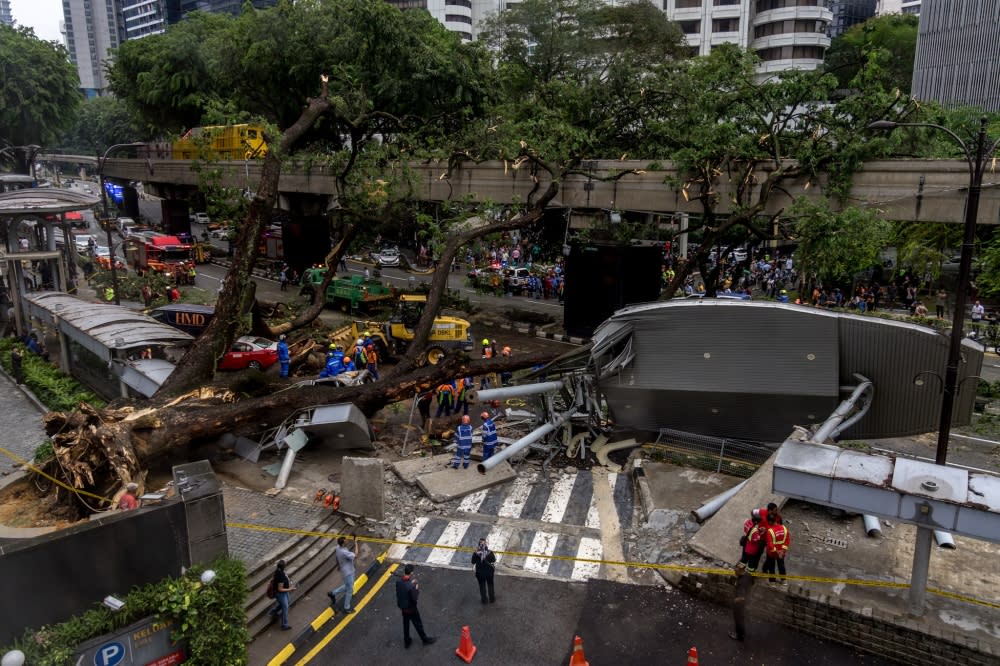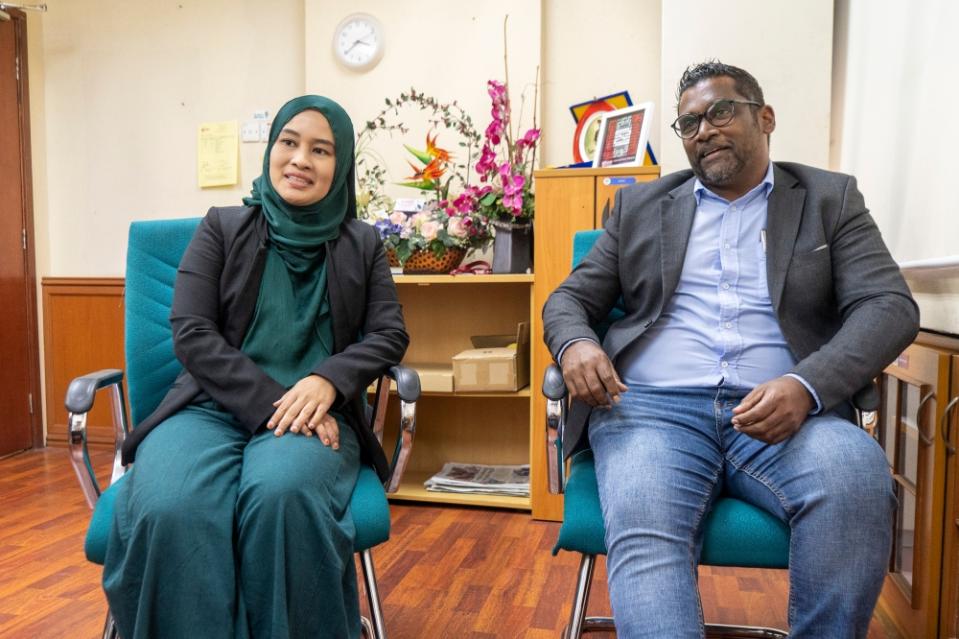Falling trees in KL: Why does this keep happening and what can be done to prevent accidents and losses?

KUALA LUMPUR, May 19 — While falling trees are a rare occurrence, they can usually be considered part of nature. However, the recent spate of incidents in urban Kuala Lumpur has largely been the result of unchecked development, several experts told Malay Mail.
Speaking as part of a panel of experts arranged by Universiti Putra Malaysia (UPM), arborist Prof Hazandy Abdul Hamid said this has also been exacerbated by the drastic climate change which affects mature, old, and large trees.
“Surrounding environmental pressures such as infrastructure development and building construction have heightened the risk of failure for these trees,” said the dean of the Department of Forestry Science and Biodiversity under the UPM’s Faculty of Forestry and Environment.
Hazandy, whose expertise is in tree physiology and improvement, said the symptoms from extreme climate stress would only show after several years, and the damage may only become apparent when the weakened tree or its limbs fall during strong winds and heavy rains.
“Trees may exhibit reduced growth for one or two years, and this decline, coupled with their diminished natural defences, creates an opportunity for pests and diseases to thrive,” he said.
“One of the most significant losses has been mature trees, which are more vulnerable to stress and damage than younger, smaller trees. This has led to a noticeable increase in the number of mature trees falling or failing throughout the town.”

UPM arborist Sreetheran Maruthaveeran cautioned that cutting down trees must only be the last option, advocating instead for reducing the weight of the tree’s crown and branches to prevent trees from falling over during rainy weather. — Picture by Hari Anggara
His colleague in the same faculty, senior lecturer Ruzana Adibah Mohd Sanusi, while conceding that many factors could contribute to the incidents, said that the surroundings of the tree also contributed.
“There are a lot of factors, I think not only the weather, the history of the tree itself and the development, whatever you have done to the surrounding of the trees is actually affecting what the tree was experiencing. So that could affect why it fell,” said the laboratory chief of the Institute of Tropical Forestry and Forest Products.
Earlier this month, a 47-year-old man died from an incident that saw a large tree topple in downtown Kuala Lumpur just outside the Concorde Hotel on Jalan Sultan Ismail. Two others were also injured and several vehicles were damaged while the monorail line was obstructed.
Less than a week later, another tree fell just a walking distance away in front of Menara Prestige, along Jalan Pinang. One of the damaged cars from the incident was a Proton X70 police patrol car escorting Melaka Chief Minister Datuk Seri Ab Rauf Yusoh.
Similar incidents were reported this month in Penang, Alor Setar and Nilai.

Last week, Housing and Local Government Minister Nga Kor Ming said that the National Landscape Department will identify suitable plant species to be re-planted along the roads in Kuala Lumpur. — Picture By Raymond Manuel
Hazandy said another factor is the fact that most of the trees planted in urban areas here were foreign species and were not native to the country.
He gave the example of the rain tree, or Samanea saman, which is originally from Central and South America. According to Hazandy, this species was chosen since it is a woody tree that adapts well to Malaysia’s weather and soil, and has since become commonplace in urban and residential areas.
“This type of woody tree species or other introduced tree species for urban landscapes in Malaysia are mostly fast-growing species. Fast-growing tree species, with less fortified tissues and lower wood density, tend to accumulate more water compared to slow-growing species with higher wood density.
“In the case of drastic climatic changes, from hot to wet weather, the weakened internal wood in fast-growing trees due to the climate impact in previous years as stated above may fail because of the sudden aboveground burden of the large trunks or limbs from the absorbed water,” he said.
Last week, Housing and Local Government Minister Nga Kor Ming said that the National Landscape Department will identify suitable plant species to be re-planted along the roads in Kuala Lumpur.
Federal Territories Minister Dr Zaliha Mustafa also said that the Kuala Lumpur City Hall (DBKL) had been instructed to cut down high-risk trees around the city and to develop new guidelines related to aged or high-risk trees following the incidents.
Subsequently, Prime Minister Anwar Ibrahim ordered Kuala Lumpur Mayor Datuk Seri Kamarulzaman Mat Salleh to plant 100 trees for every tree that is felled in the city.
In response, Ruzana said regular inspection and risk management should be done more frequently to avoid more unintended incidents involving the masses.

Senior lecturer department of forestry science and biodiversity Ruzana Adibah Mohd Sanusi and Assoc. Prof. Sreetheran Maruthaveeran are seen during the interview session with Malay Mail at Universiti Putra Malaysia in Serdang May 15, 2024. — Picture by Shafwan Zaidon
Fellow UPM arborist Sreetheran Maruthaveeran also cautioned that cutting down must only be the last option, advocating instead for reducing the weight of the tree’s crown and branches to prevent trees from falling over during rainy weather.
The associate professor in the Department of Landscape Architecture insisted that cutting tree branches without knowledge would simply harm the plants, which can cause them to die.
“The issue is most of these local councils, when they get these contractors to do the pruning, these contractors might not have enough knowledge of where to cut, where to prune at the correct angle and at the correct spot. So sometimes, of course, when you prune, you can reduce the risk, but it might even bring more danger to the plant itself.
“When you cut the branches at the wrong angle, you can bring even more infection and so on, and then it will be worse,” he said.
For a quick and efficient solution for now, Sreetheran said local authorities should prioritise trees, based on their age and risk to the public, for inspection. He also added that while replanting trees is a good effort, it, however, has lesser value to keeping mature trees.
“Big and mature trees can absorb more carbon dioxide and release more oxygen compared to the replanted ones,” he said.
In addition, Hazandy proposed that local councils improve the management plan for shady, large and mature or old trees by looking at the role of research.
“This involves research experts from institutions of higher learning and specific research institutions to provide scientific and analytical data from various angles including climate and weather changes that can support the management of these trees to reduce the risk of tree failure and maintenance costs,” he said.
On Thursday, FT Minister Dr Zaliha said the DBKL was directed to establish a task force soon to closely monitor and maintain the shade trees in the capital city, which should include stakeholders such as non-governmental organisations, arborists and experts from the Forest Research Institute Malaysia.



